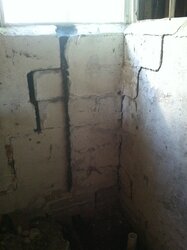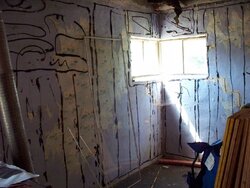When we removed the paneling we found cracks in the joints. Very old home, we found animal hair insulation stuffed in the cracks-ewww
1 . Should we fill the cracks with insulation before repairing?
2. How should we repair these cracks? (what type of filling etc?
1 . Should we fill the cracks with insulation before repairing?
2. How should we repair these cracks? (what type of filling etc?



